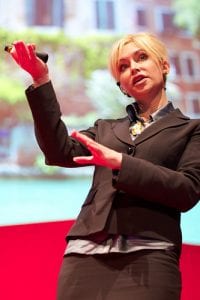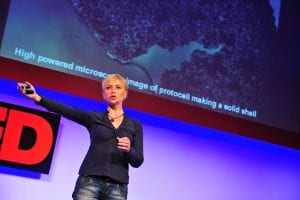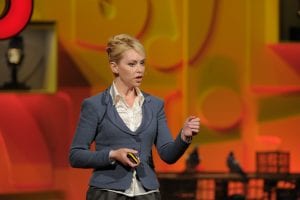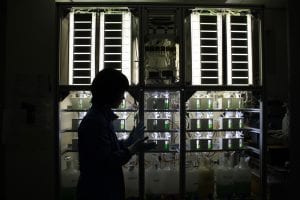
Ira Pastor, ideaXme exponential health ambassador and founder of Bioquark, interviews Professor Dr. Rachel Armstrong, Professor of Experimental Architecture at the School of Architecture, Planning and Landscape, at Newcastle University.
Ira Pastor comments:
On past shows, as we’ve been navigating the biological architecture of life, we’ve spent time taking about the important differences between the properties of machines, and that of living organisms.
One, the machine, representing a system of parts working together, each with a definite function, performing a particular task; all of which is organized, assembled, maintained, and repaired by external agents.
The Concept of Organicism
In contrast to the organism, whose activities are directed toward the maintenance of its own organization, acting on its own behalf: self-organizing, self-producing, self-maintaining, self-regenerating, all while undergoing continual bidirectional interaction and communications with the many levels of the hierarchy which it sits within, in order to maintain the integrity of the whole, as well as the parts.
Today, we are going to take this concept of “organicism”, and apply it beyond our usual focus of the human body.

Professor Dr. Rachel Armstrong Researches Living Architecture
Professor Dr. Rachel Armstrong is Professor of Experimental Architecture at the School of Architecture, Planning and Landscape, at Newcastle University.
Professor Armstrong completed her PhD at The Barlett School of Architecture, and while conducting experimental work at The University of Southern Denmark, first explored the concept of “living architecture,” delving deeper into the possibility that metabolisms in the natural world could be translated into more sustainable architectural practices, and her current work focuses on establishing the conditions for “living architectures” which couple the computational properties of the natural world with building structures and infrastructures.
In addition to being director and founder of the Experimental Architecture Group (EAG), whose work has been published, exhibited and performed at a variety of international venues, she is also coordinator for the Living Architecture project, which is an ongoing collaboration of experts from universities in the UK, Spain, Italy and Austria, which has focused integrating fascinating next-generation, bio-reactor systems that can work synergistically within these novel architectures, to do things such a clean wastewater, generate oxygen, provide electrical power and generate usable forms of biomass, so in essence recreating this bidirectional flow where the architecture not only takes resources from the environment, but gives back.

Dr. Armstrong’s Publications
Dr. Armstrong is widely published in both academic and popular press.
She has written a number of academic books including: Liquid Life: On Non-Linear Materiality; Soft Living Architecture: An Alternative View of Bio-informed Practice; Star Ark: A Living, Self-Sustaining Spaceship; and Vibrant Architecture: Matter as a CoDesigner of Living Structures.
Her fiction books include Invisible Ecologies and Origamy.

On this show we will hear from Professor Armstrong:
About her background, how she developed an interest in the natural world, biotechnology and synthetic biology, and the fascinating domain of “living architecture.” A discussion of “bottom up” versus “top down” architectural design thinking, such as using metabolic materials (properties of living systems) versus Victorian technologies. A discussion of “Proto Cells” or the “21st century unit of design,” as well as a discussion of “Living Machines.” A vision towards “Big Picture” / Moonshot ideas such as the repair of atolls; land reclamation (Venice); desertification. A discussion of astro-biological implications of such technology. Finally, a discussion of the “Intelligence of Nature.”

Credits: Ira Pastor interview video, text, and audio.
Follow Ira Pastor on Twitter: @IraSamuelPastor
If you liked this interview, be sure to check out our interview with Professor Dr. Kelly Drew from the Department of Chemistry and Biochemistry, Institute of Arctic Biology, University of Alaska, Fairbanks.
Follow ideaXme on Twitter: @ideaxm
On Instagram: @ideaxme
On YouTube: ideaxme
Find ideaXme across the internet including on iTunes, SoundCloud, Radio Public, TuneIn Radio, I Heart Radio, Google Podcasts, Spotify and more.
ideaXme is a global podcast, creator series and mentor programme. Our mission: Move the human story forward!™ ideaXme Ltd.

Pingback: Xenobots: Living Machines - ideaXme
Pingback: The 8th Continent: Award Winning Design Concept to Clean the Oceans - ideaXme